Historical Background
Following his defeat at Raphia, Antiochus III campaigned continuously to restore his empire. He re-conquered Asia Minor, Armenia, Parthia and Bactria. Next, he avenged Raphia with a decisive victory over the Ptolemaic Egyptians at Panion in 199 BC. By these victories he earned the title ‘the Great’. Meanwhile, Macedon’s defeat at Cynoscephalae in 197 BC left a power vacuum in Greece. Antiochus, seeing an opportunity, invaded Greece, but Rome quickly drove him back. A Roman consular army under Lucius Cornelius Scipio pursued Antiochus into Asia Minor. Antiochus accepted the Roman challenge near Magnesia. Antiochus fielded a large army featuring his Greco-Macedonian phalanx, Galatian warriors, cataphracts, chariots and elephants. The Romans had two legions supported by Greek and Pergamene allies under their king Eumenes II. Though the Seleucid Army was larger, the Roman legionnaires, veterans of the War with Hannibal, were far more effective soldiers. The action started on the Roman right when Eumenes launched a combined skirmisher and cavalry force against the Seleucid chariots. The Legions then moved forward against the Seleucid phalanx. Seeing his army giving away, Antiochus charged forward with his heavy cavalry in an attempt to turn the tide. He broke through the Roman right, but was forced back by the Roman elephants before he could flank the Legions. Then the Seleucid elephants in the center stampeded, Antiochus’ phalanx collapsed, and his entire army routed. Antiochus managed to escape and later made peace with Rome by yielding Asia Minor and paying a large indemnity. However, the defeat led to the rebellion of his eastern provinces, and Antiochus’ life’s work was undone. Rome emerged as the dominant Mediterranean power.
The stage is set. The battle lines are drawn and you are in command. The rest is history.

 |
 |
 |
 |
 |
 |
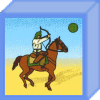 |
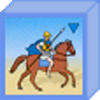 |
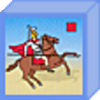 |
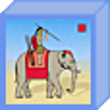 |
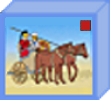 |
 |
| 3 | 2 | 1 | 1 | 1 | 2 | 1 | 1 | 1 | 2 | 1 | 2 |
 |
 |
 |
 |
 |
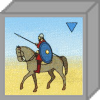 |
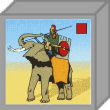 |
 |
||||
| 4 | 2 | 2 | 4 | 1 | 2 | 1 | 2 |
War Council
Seleucid Army
(Use Persian blocks)
• Leader: Antiochus III
Emperor of the Seleucids
• 4 Command Cards ![]()
![]()
![]()
![]()
Roman Army
(Use Roman blocks)
• Leader: Consul Lucius
Cornelius Scipio
• 5 Command Cards ![]()
![]()
![]()
![]()
![]()
• Move First ![]()
Victory
7 Banners
Special Rules
• The River Phrygios is impassable.
• Optional—Roman Tactical Flexibility. An unsupported Greek heavy infantry unit may only battle back against a Roman medium or heavy infantry unit with 3 battle dice (which reflects the ability of the more maneuverable legions to gain the flanks of the phalanx and strike decisively).
